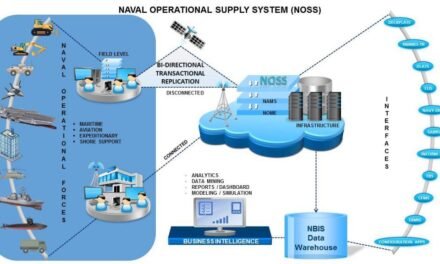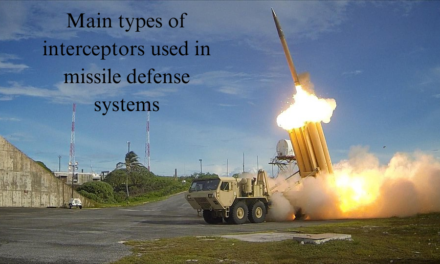Directed-energy weapons (DEWs) are advanced military systems that deliver focused energy (such as lasers, microwaves, or particle beams) to damage or disable targets without the use of traditional projectiles. These weapons are being developed to provide precise, rapid, and cost-effective capabilities for future warfare. Here’s a breakdown of DEWs, their types, applications, and how they are being developed for future combat:
1. Types of Directed-Energy Weapons
- High-Energy Lasers (HELs):
- Emit concentrated beams of light to destroy or disable targets.
- Effective against drones, missiles, aircraft, and small boats.
- Examples: LaWS (Laser Weapon System) used by the US Navy.
- High-Powered Microwaves (HPMs):
- Emit electromagnetic pulses to disrupt or destroy electronic systems and communication equipment.
- Ideal for countering swarms of drones or disabling enemy radars.
- Examples: Raytheon’s PHASER system.
- Particle Beam Weapons:
- Fire charged or neutral particles at high velocity to damage or neutralize targets.
- Primarily in experimental stages and considered for space-based applications.
- Ultraviolet and Infrared Lasers:
- Specialized lasers designed for unique applications, including stealthy target engagement.
2. Key Advantages of Directed-Energy Weapons
- Precision and Speed:
- DEWs engage targets at the speed of light, making them highly effective against fast-moving threats.
- Reduced Collateral Damage:
- Their focused energy minimizes unintended damage compared to explosive weapons.
- Low Per-Shot Cost:
- After the initial system deployment, DEWs have minimal operational costs compared to traditional munitions.
- Unlimited “Ammunition”:
- As long as there is power, DEWs can continue to engage targets without reloading.
- Versatility:
- Can be scaled for non-lethal (crowd control) or lethal applications.
3. Applications in Future Warfare
- Counter-Unmanned Aerial Systems (C-UAS):
- Neutralize drones in swarms or individually, addressing an increasingly common battlefield threat.
- Example: HEL systems disabling drone motors or sensors.
- Missile Defense:
- DEWs intercept and destroy incoming ballistic missiles, cruise missiles, or hypersonic threats during various phases of flight.
- Example: Boost-phase missile interception using space-based lasers.
- Naval Defense:
- Protect ships from missiles, aircraft, and small boats with laser systems.
- Example: US Navy’s LaWS engaging UAVs and small boats.
- Electronic Warfare:
- HPMs disrupt enemy communication, radar, and electronic systems, rendering them ineffective.
- Anti-Personnel and Crowd Control:
- Non-lethal DEWs for dispersing crowds or incapacitating personnel without permanent injury.
- Example: Active Denial System (ADS) emitting millimeter waves causing an intense burning sensation.
- Space-Based Weapons:
- Future deployment of DEWs on satellites for strategic applications, including anti-satellite operations and missile defense.
4. Development Challenges
- Power Requirements:
- DEWs require significant power to generate and sustain high-energy beams, necessitating advances in power generation and storage.
- Thermal Management:
- Dissipating the heat generated by DEWs is critical for sustained operation.
- Atmospheric Interference:
- Weather conditions, such as rain, fog, or dust, can scatter or absorb directed energy, reducing effectiveness.
- Miniaturization:
- Reducing the size and weight of DEWs to fit on smaller platforms, such as drones or vehicles, is a key focus.
5. Key Technologies Enabling DEWs
- Solid-State and Fiber Lasers:
- Compact and efficient lasers are critical for mobile and platform-based DEWs.
- Advanced Power Systems:
- High-capacity batteries, energy storage devices, and portable generators provide the necessary power for DEWs.
- Targeting and Tracking Systems:
- AI-enhanced sensors and tracking technologies improve precision and response time.
- Thermal Management:
- Heat sinks, advanced materials, and cooling systems ensure continuous operation.
6. Current DEW Programs and Projects
- United States:
- US Navy’s LaWS: A ship-mounted laser system effective against drones and small boats.
- Army’s HEL-TVD: A ground-based high-energy laser system for air defense.
- PHASER System: HPM weapon for countering drone swarms.
- China:
- Developing HEL and HPM systems for anti-drone and anti-satellite applications.
- Researching space-based DEWs for strategic dominance.
- Russia:
- Claims development of Peresvet, a mobile laser system for air defense and space operations.
- Europe:
- Focus on integrating laser systems into naval and ground platforms, such as the German Laser Effector program.
- India:
- Working on the Directed Energy Systems program for anti-drone and missile defense.
7. Future Trends in DEW Development
- Integration with AI:
- AI-driven targeting systems for faster and more accurate engagement of multiple threats.
- Multi-Domain Platforms:
- Deployment on ground vehicles, aircraft, naval ships, and satellites.
- Miniaturization and Mobility:
- Portable DEWs for infantry units and smaller platforms.
- Space-Based Systems:
- DEWs for satellite defense and missile interception in space.
- Hybrid Systems:
- Combining lasers and HPMs for complementary effects, such as disabling electronics and destroying physical structures.
8. Strategic Implications
- Force Multiplication:
- Enhances the effectiveness of existing military assets by providing advanced defensive and offensive capabilities.
- Asymmetric Advantage:
- Offers an edge against adversaries relying on traditional weapons.
- Deterrence:
- DEWs serve as a visible demonstration of technological superiority, deterring potential threats.
- Reduced Logistics:
- Eliminates the need for conventional ammunition supply chains.
Conclusion
Directed-energy weapons are poised to revolutionize future warfare by providing precision, speed, and cost-effective solutions against a wide range of threats. While challenges like power generation and environmental interference remain, ongoing advancements in technology are rapidly bringing these weapons closer to widespread deployment, transforming military strategies and capabilities in the process.
Hashtags
#DirectedEnergyWeapons #DEWTechnology #LaserWeapons #HighEnergyWeapons #ElectromagneticWeapons #FutureOfWarfare #AdvancedMilitaryTech #DEWInCombat #ModernWarfareTech #NextGenWeaponry #HighEnergyLasers #MicrowaveWeapons #AdvancedDefenseTech #CuttingEdgeWeapons #InnovativeWeaponSystems #GlobalDefenseEthics













